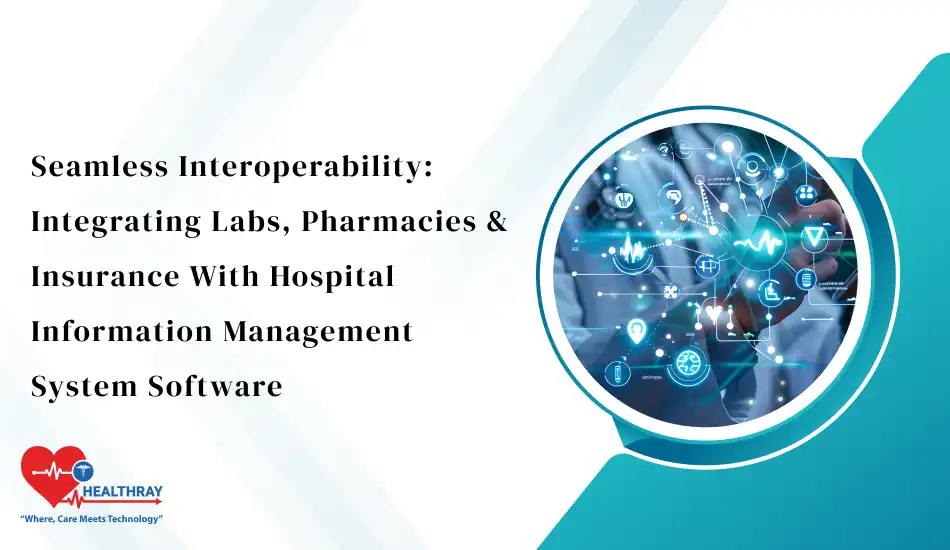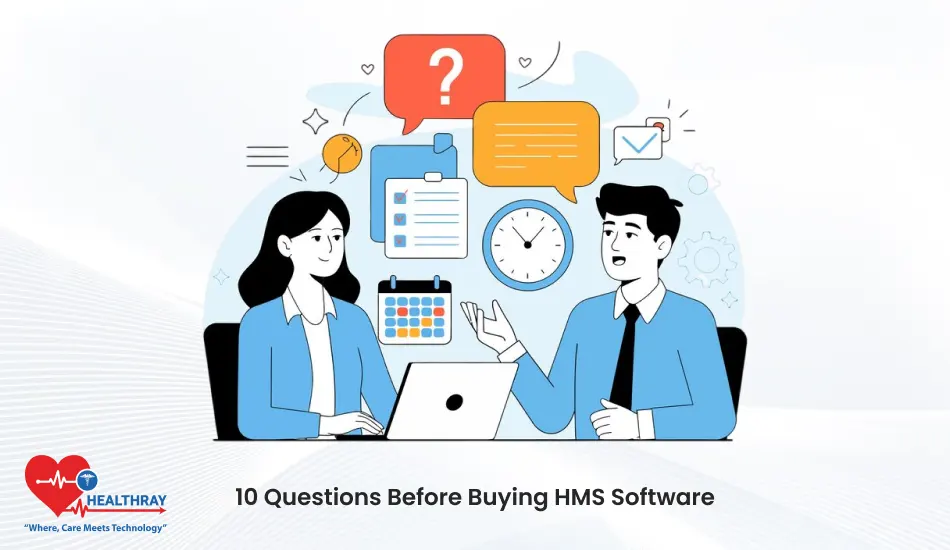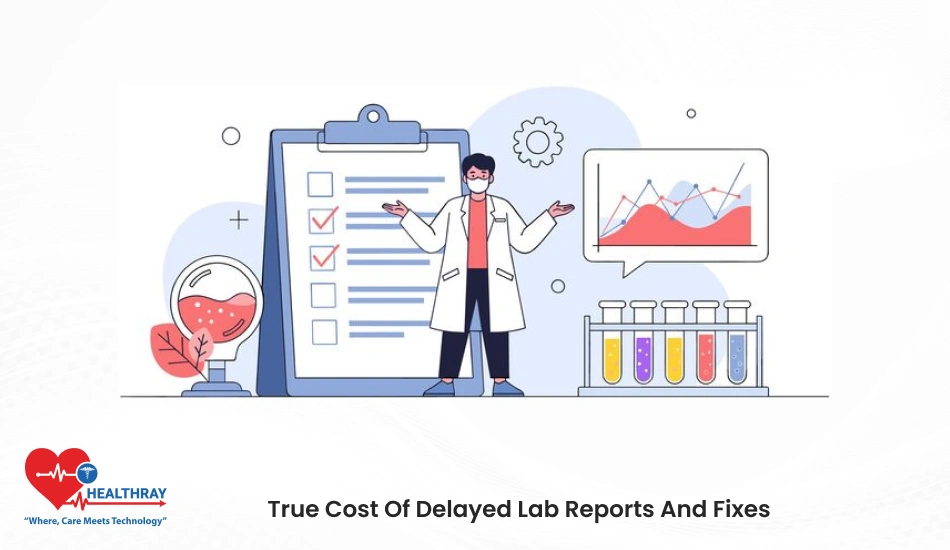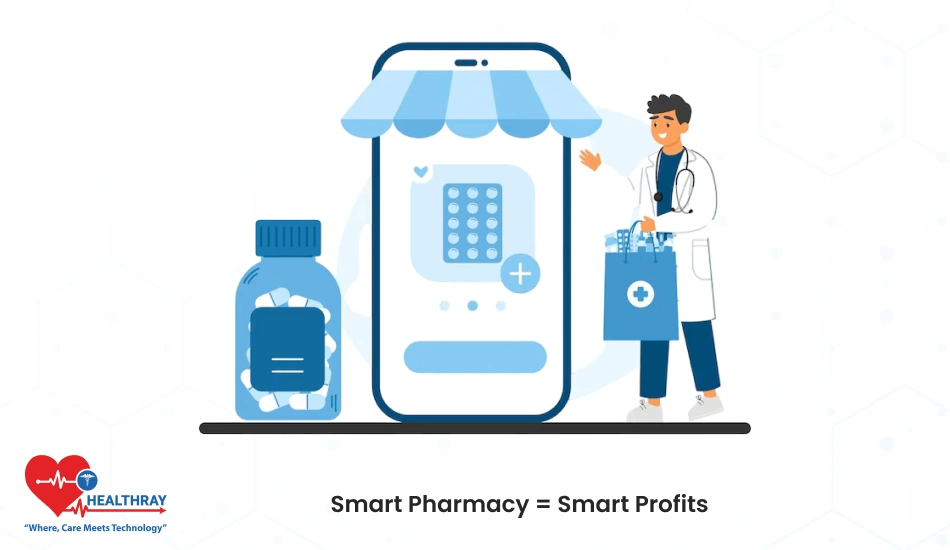Summary
Nowadays, HL7 FHIR (Fast Healthcare Interoperability Resources), like advanced standardized standards and technologies enable secure and standardized data exchange. Medical workflows are hampered by the lack of connectivity between disparate and mismatched data matches in manual infrastructure. Furthermore, with interoperability integration in the hospital management system, patient safety gets improved, errors get minimized, repeat tests get avoided, and the insurance claims process becomes faster. In this blog, I will discuss how seamless interoperability plays a crucial role when integrated with labs and pharmacies and insurance systems and how this interconnected system takes patient care to the next level.
Introduction
Hospital management information system software serves as the foundation for hospitals’ administration of clinical documentation, billing, and patient registration. Presently, seamless exchange of patient data across different systems has become imperative for personalized, optimal and connected care. In a simple world, interoperability means when different healthcare systems and applications can readily communicate, exchange and understand shared data.
Now, integrating Hospital Information Management System (HIMS) with labs, pharmacies, and insurance providers is no longer just an option but has become a necessity. I am working as an IT manager in lifeline hospitals of New Jersey, USA. In the traditional system, our lab, pharmacies and insurance department were distributed differently; we didn’t have any connectivity with other departments, and it took significant time to search any relevant data of patients, thereby increasing the wait time of both doctors and patients.
Then, finally, we adopted a hospital management system. Now, we get all the lab reports, medicine and insurance approvals in just 1 click. With hospital management solutions, doctors can make fast decisions, patients feel satisfied with your services and hospitals become truly smart and connected.
Different Healthcare Interoperability Levels
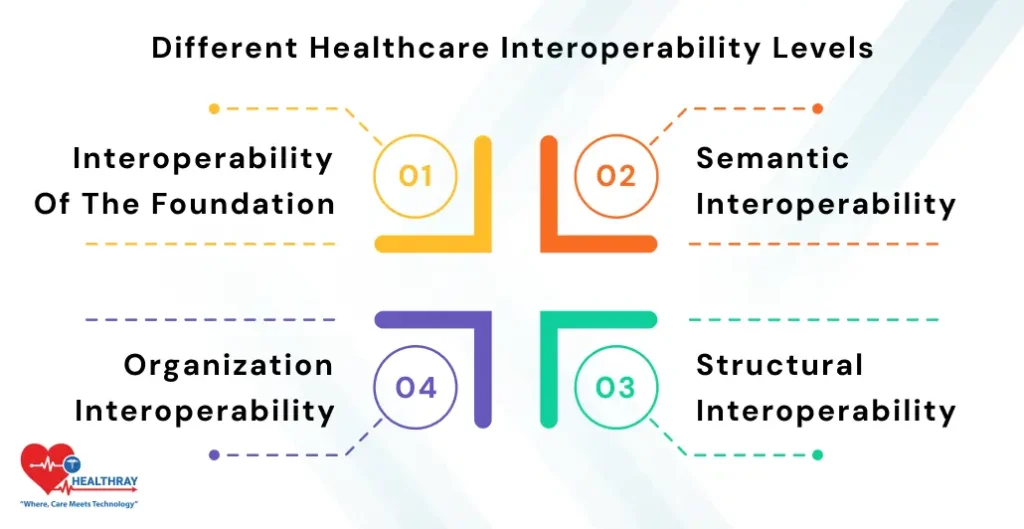
Let’s check out:
Interoperability of the Foundation
Foundation interoperability is a basic level of healthcare data exchange. Furthermore, it ensures different departments of hospitals seamlessly exchange their data. In this level, the main focus is on data transfer, like transferring data from the hospital system to patient records safely. Furthermore, this foundation set the next level of interoperability where understanding and collaboration among different departments become deeper.
Semantic Interoperability
Semantic interoperability is an advanced level where systems not only recognize data but also understand the meaning of the data. Furthermore, it ensures that all healthcare uses a common vocabulary.
Suppose if one system says “bp,” the other system should be able to understand it as “blood pressure,” not any other technical term. Consider how difficult it will be to interpret data if each system speaks a different language. Indeed! Hence, semantic interoperability is important.
Furthermore, it creates uniform understanding so that every staff member and department, such as doctors, labs and the insurance team, operates on the same page and makes the patient care smooth and accurate.
Structural Interoperability
Structural interoperability is a level where standardization of formats and structure is needed for exchanging data. It implies that when two systems send information to each other, the data layout and their organization should be the same, whether it’s patient data or billing records.
That’s the compelling reason why it is important to use HL7 FHIR protocols that ensure data consistency throughout the journey. Think about the challenges of comprehending the data and procedure if each hospital adopted a different format. Therefore, it is imperative to adopt structural interoperability in all the workflows. Furthermore, it creates a uniform data structure to make the communication smooth, compatible and error-free.
Organization Interoperability.
Organizational interoperability focuses on collaboration and coordination among different systems. Furthermore, in this level, the hospital system does not only exchange data; in addition, the workflows of hospitals, labs, pharmacies, and insurance providers also get aligned. That means all departments work towards a unified goal, i.e., better patient care.
Furthermore, the patient claim process will become excessively slow if the policies and procedures of the insurance company and the hospital system do not align. That’s the main reason organization interoperability is important in medical or clinic workflows. Additionally, it synchronizes the policies, procedures and governance and makes the healthcare ecosystem truly connected and efficient. And, most importantly, this level builds more trust and transparency among different departments. Overall, it strengthens long-term collaborations.
Benefits of Seamless Integration
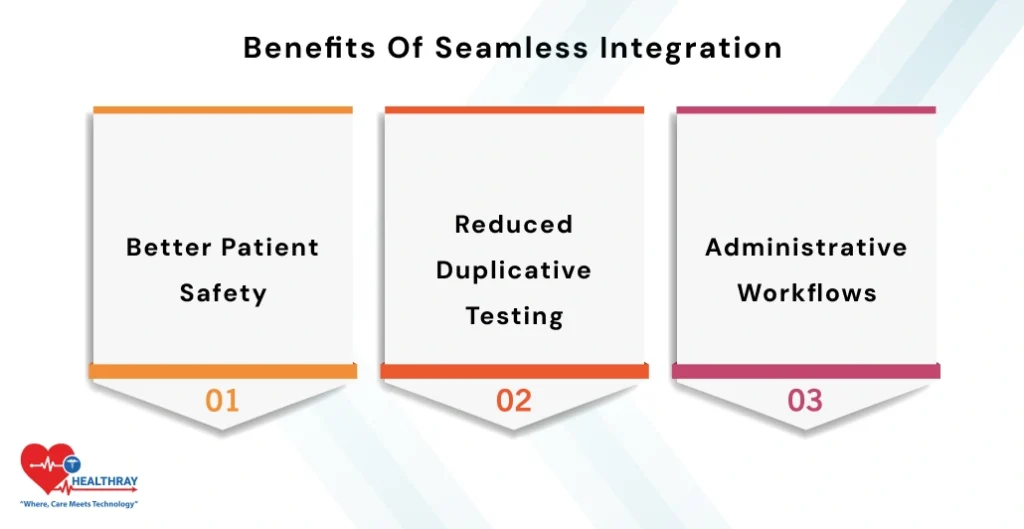
Let’s check out:
Better patient safety
With online digital software, you can simplify all the hectic manual tasks of hospitals. Furthermore, seamless integration provides you with immense patient safety; you no longer need to stress about protecting data from hackers. Further, manual infrastructures are not coded with high encryption protocols; therefore, chances of threats are higher, but with advanced patient record management systems, data security has become a significant aspect.
Now, you can share data among different departments safely. Further, doctors can easily view real-time lab results and updated medication records and provide immediate care to patients. Hence, there are less chances of errors and misleading information. Overall, with clinical management solutions, you can boost hospital reputation and credibility. Further, your system is so well-protected and encrypted that only authorized access can view and modify it.
Step towards digital era with our healthcare solution
Revamp your hospital facilities and embrace change for better healthcare management. Ease in managing and organizing large medical datasets leads to effective analysis. Seize the opportunity now!
Reduced Duplicative Testing
Duplicate testing and unnecessary prescriptions are common challenges of hospitals that not only waste resources but also create inconvenience for patients. In manual infrastructure, data is not properly organised, and frequently, medical staff conduct the same test on patients multiple times. Thus, doctors get the same reports multiple times, which not only creates confusion but also delays patient care. But the best part is that hospitals can now easily cope with such complex situations.
Furthermore, by integrating labs and pharmacies with advanced hospital applications, doctors can easily update the reports and medication histories in just a single click. Further, doctors no longer need to spend time on checking updated reports manually or calling every department to provide them with updated results. Additionally, it negates the need for conducting the same test multiple times and providing prescriptions for unnecessary medicines to patients. Overall, clinical health management optimizes patient time, hospital resources, and complete patient care.
Administrative Workflows
Administrative workflows are the substantial tasks of hospital operations, including patient registration, billing, insurance claims, and internal approvals. Furthermore, when you execute the workflows manually, there are higher chances of errors, delays, and redundant paperwork, which are unpleasant for both staff and patients.
Further, when you integrate lab, insurance, and pharmacy systems, you can easily streamline the operations. Additionally, with a digital healthcare system, you can make changes to data in real-time. Also, you can automatically submit and approve the insurance claims. Consequently, it minimizes the complete workload of staff. Overall, HMIS software enhances the efficacy, reduces errors, and makes the patient experience smooth and unperturbed.
Technical Approaches to Achieve Integration
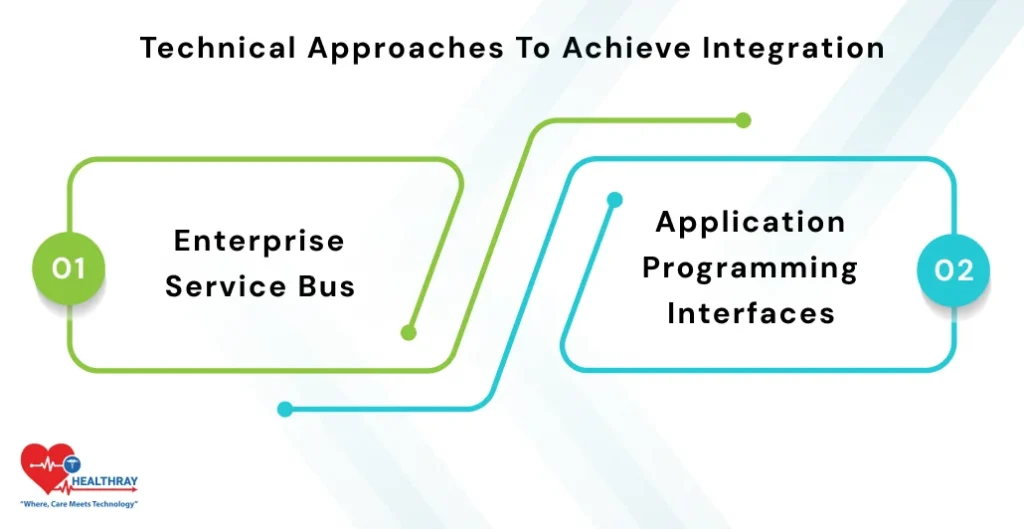
Let’s check out:
Enterprise Service Bus
Enterprise service bus is a technical solution that helps hospitals and healthcare systems to simplify data integration and communication. Furthermore, esb basically works as a central hub where different systems, such as labs and pharmacies and insurance providers can securely and efficiently exchange their information.
Just think about how complicated it would be and how many mistakes could arise if all the systems were connected to one another. Further, ESB resolves these problems by standardizing messages, routing data and managing workflows centrally. Overall, hospitals will get real-time information, smooth integration and enhanced operational performance and patient care.
Application Programming Interfaces
API is a key tool for healthcare integration that provides secure and standardized access for HIIMS functionalities. That means external labs, pharmacies, and insurance systems can directly interact with HIIMS without compromising data security. Just consider the likelihood of delays and errors if all systems exchange data manually.
The best part, though, you can easily solve these issues with APIs by enabling real-time data sharing, automated workflows, and seamless communication between systems. Overall, with a AI-driven digital clinic system, a hospital can make faster decisions, get accurate records, and acquire a smooth patient experience.
Conclusion
Seamless interoperability between labs, pharmacies, insurance, and Hospital Information Management Systems is transforming healthcare delivery by improving clinical accuracy, operational efficiency, and patient satisfaction. Although there are still issues, mainly with staff adoption, security, and compatibility with legacy systems, utilizing standards like HL7 FHIR and implementing strong technical solutions open the door to fully connected healthcare ecosystems.
I hope the above blogs provide you useful insights on hospital information management system software and how it builds more trust and transparency among different departments and strengthens long-term collaborations.
Still facing doubts? Connect with Healthray!!!
